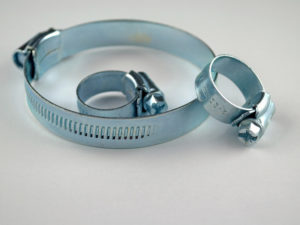 Spring is officially here, which means warm weather is just around the corner and soon you’ll be turning on your air conditioner to keep cool in your car. But don’t forget that your car needs to keep cool throughout the year, not just during warmer weather.
Spring is officially here, which means warm weather is just around the corner and soon you’ll be turning on your air conditioner to keep cool in your car. But don’t forget that your car needs to keep cool throughout the year, not just during warmer weather.
Your car’s radiator is what keeps your car’s engine from overheating. It’s important to keep your radiator’s hose in good condition to keep your radiator working correctly.
What does the radiator hose do for my cooling system?
Your radiator isn’t capable of cooling down your engine all on its own. It needs a series of system hoses to help carry coolant throughout the radiator and your car’s engine.
Unfortunately, radiator hoses are made of rubber. This makes them susceptible to cracking over time in the heat of the engine.
If your coolant is leaking, it could be a sign that your radiator hose needs to be replaced. However, not all drivers have the immediate finances to see their mechanic right away about fixing a cracked radiator hose.
That being said, here’s what you can do if one of your radiator hoses have cracked or broken:
- Examine the engine. Let the engine cool down before you touch anything. Only examine the engine while it cools down. If you have a coolant leak, the fluid may either be yellow, orange, or green and will most likely be leaking from the radiator, engine, or hose.
- Use a reliable clamp if necessary. When you’re in an emergency situation or you’re unable to see your mechanic, don’t cut the hose. Instead, use a screw clamp to cover the crack in the hose to prevent the coolant from leaking. This should be able to protect the hose until you’re able to change it.
- Don’t restart the engine until it’s cooled down. Finally, don’t start your car until the engine has cooled down again. This is because starting the car when it’s still hot could weld the clamp to the hose due to high temperatures.
Hose clamps are available in a wide array of sizes to meet the needs of hoses, such as radiator hoses, or any size. Whether you’re looking for stainless steel clamps, premium hose clamps, automotive hose clamps, or hose clamps with an embossed clamp design, Hose Clamp Kings have the clamps you need. For more information about an embossed clamp design or other types of hose clamps, contact Hose Clamp Kings today.

